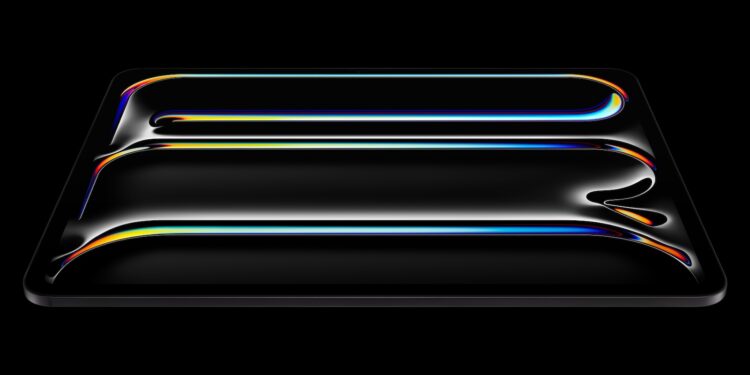The new M4 iPad Pro is a technical masterpiece that is equipped with an impressive OLED display. However, some users report an annoying grainy effect on the screens. Below you will find out everything you need to know about this phenomenon, possible causes and what you can do as an affected user.
Since the launch of the new M4 iPad Pro models, many users have complained on various platforms such as Reddit and the MacRumors forums about a visible grain pattern on the OLED displays. This effect is said to be particularly noticeable in dark environments and at low to medium brightness. But what is really behind it? Is it a production defect or is it a normal phenomenon for OLED displays?
user reports
The first reports about the grainy display on the M4 iPad Pro appeared Reddit and in the MacRumors forums on (via MacRumors). Users describe a static grain pattern that is particularly noticeable in gray or muted colors. Some compare the effect to the visual noise of a photo taken at a high ISO setting.
visibility of the effect
The graininess is most noticeable in dark environments and on displays with low to medium brightness. This means that many users will notice the effect mainly when using the display indoors or at night. In brighter environments or at higher brightness, the effect seems to be less noticeable.
Possible causes
design and manufacturing process
OLED displays, such as those used in the M4 iPad Pro, can appear grainy due to a number of factors. The individual subpixels in OLED displays vary in size and shape, which can result in an uneven texture. This non-uniformity is often more pronounced on larger displays. In addition, differences in the application of the organic materials can affect the uniformity of light emission.
energy management techniques
OLED displays control brightness at the pixel level, and the power management techniques used can result in slight variations in brightness. These variations sometimes manifest as a grainy effect, especially in dark environments or when displaying uniform colors.
comparison with other devices
Interestingly, there have been similar reports of grainy screens on Samsung Galaxy S24 Ultra smartphones as well. This suggests that the effect is not exclusive to the M4 iPad Pro models but is a more general phenomenon on OLED displays.
Different display suppliers
The displays for the 11-inch model of the M4 iPad Pro come from Samsung, while LG Display supplies the panels for the 13-inch model. A report from Korea in March 2024 suggests that Samsung had difficulty meeting the order quantity for the 11-inch panels, prompting Apple to pass some orders on to LG Display.
M4 iPad Pro: Affected models
Most reports refer to the 11-inch model, but there are also isolated reports about the 13-inch model. It is unclear whether the potential defect only occurs with one OLED panel supplier or whether both are affected.
Grainy display: annoyance or normal phenomenon?
The grainy display on the M4 iPad Pro is a nuisance for many users that can spoil the user experience. Whether this is a genuine defect or a typical phenomenon with OLED displays is difficult to say at this point. If you are affected by this problem, it might be worth having the device checked by an Apple service provider or considering purchasing a nano-texture display option. Despite this challenge, the M4 iPad Pro remains a powerful and versatile device that excels in many other aspects. Stay informed and watch for future updates and reports that could shed more light on this matter. (Image: Apple)





